The Rest of the Stay in Bordeaux
In the last post I had shared some information on our first couple of weeks in Bordeaux, this one covers the remainder of our January stay, which includes a lot of stuff relating to wine, because it’s Bordeaux.
We rented a car for a day so we could get to a wine tasting we had booked at Chateau Gruaud Larose. First we drove to Pauillac (which we discovered is pronounced pow-ee-yak) to wander around for a bit, then we headed to the Chateau for our tasting. Driving to the location, in the distance we could see the striking silhouette of the “Watching Tower” that was designed with the Visitor’s Center, by architects Sarl Lanoire & Courrian (you can see more amazing photos of it here).
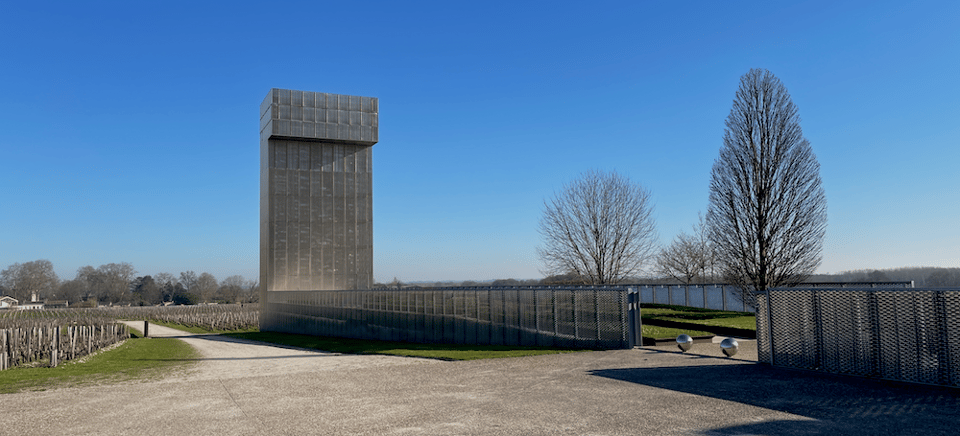
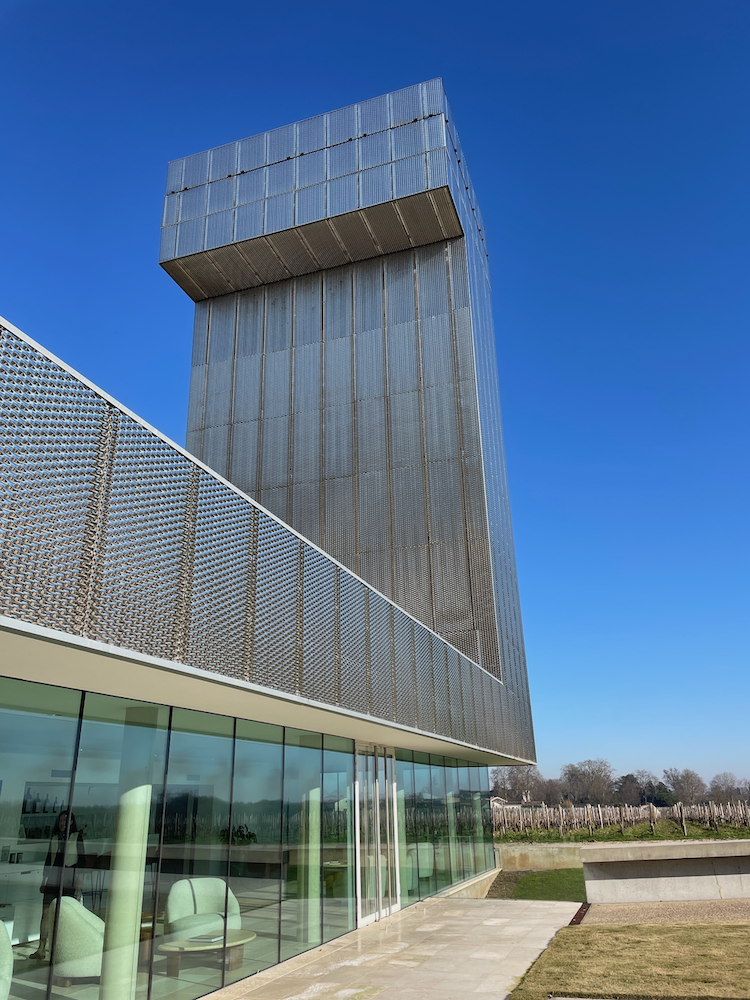
Inside the Visitor’s Center we found our guide(s) waiting for us. Since we were there in January, it was not busy, so we were fortunate enough to have a private tour. Our guide was a student in her last year of wine studies at the University of Bordeaux and since she was still learning, we were also accompanied by another guide who has worked at the Chateau for eight years. The combined knowledge made for an amazing experience. We started by ascending the tower (via an elevator) and they opened the panels on the tower, so we had a 360 degree view of the estate.
They pointed out the extent of their vineyards in each direction so we had a sense as to the size of their property. From the platform, we had an aerial view of their “hail cannon”. And no, the cannon does not shoot hail from it, instead it is meant to stop the formation of hail by sending a sonic wave into the clouds, altering the cycle of the rising and falling of the clouds. We descended the tower and continued over to the vat rooms. There are two vat rooms, one with enormous wooden vats, the other with concrete vats. The vats in both rooms are monitored via a control room that looked like something straight out of a nuclear power plant.


From the vat rooms, we were then taken to their cellars, and just like the vat rooms, there were two cellars.
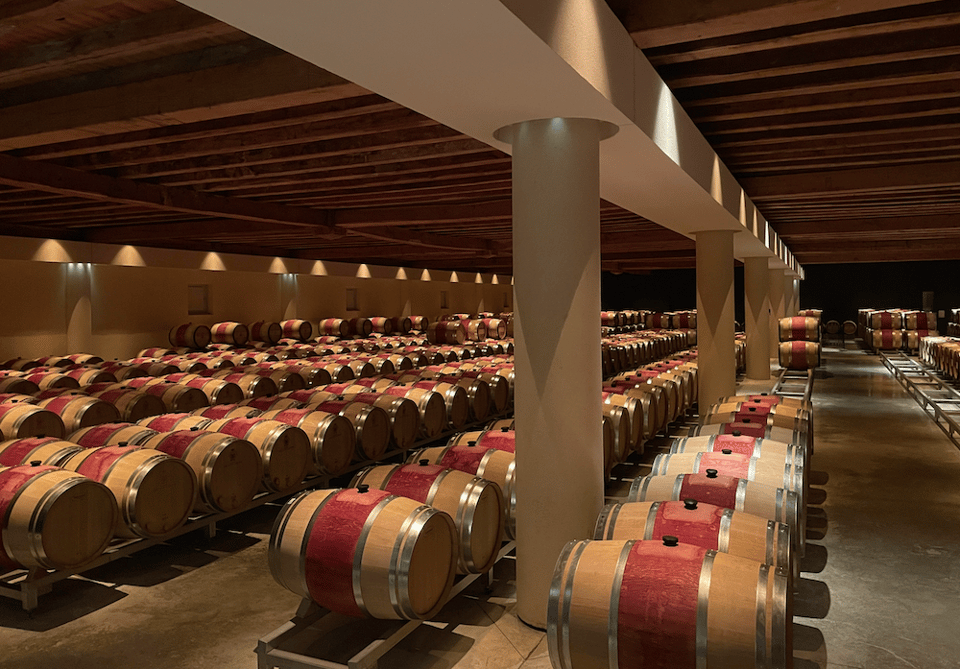
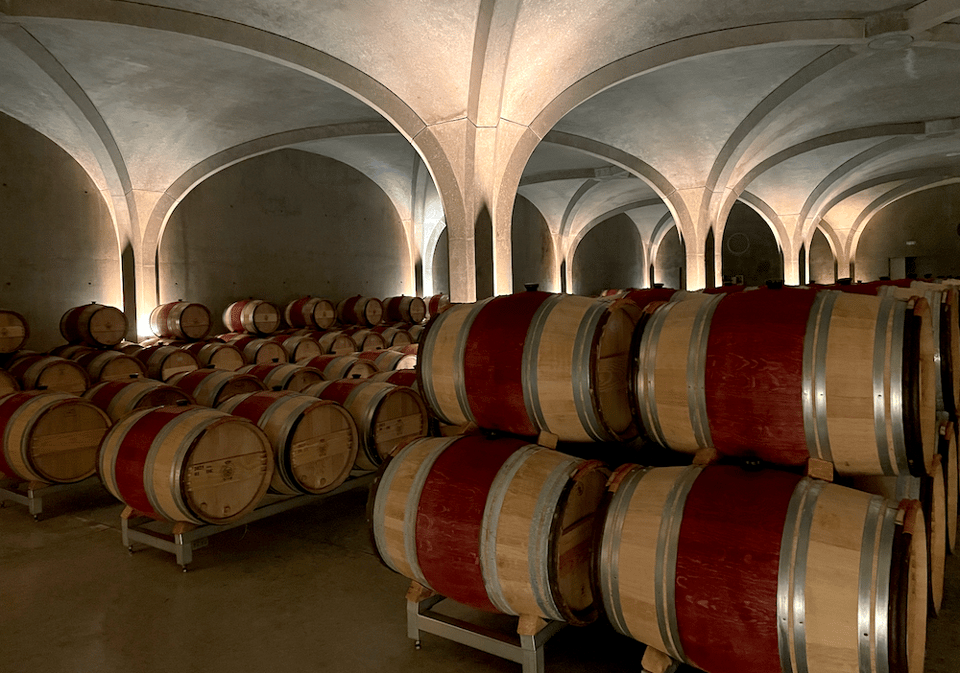
In the cellars they showed us how each barrel is stamped with the name of the cooper that made the barrel, as well as the name of the person that “toasted” the inside of the barrel. As a part of the tour we were also taken to their cellar of old vintages, where the oldest bottle in their collection is from 1815!

They explained that the corks in these bottles are replaced about every twenty years, and occasionally, one of the bottles is sacrificed to top up the other bottles from that year to compensate for the wine that has evaporated out of the bottles. At this point in the tour we headed inside the Chateau itself for the tasting.
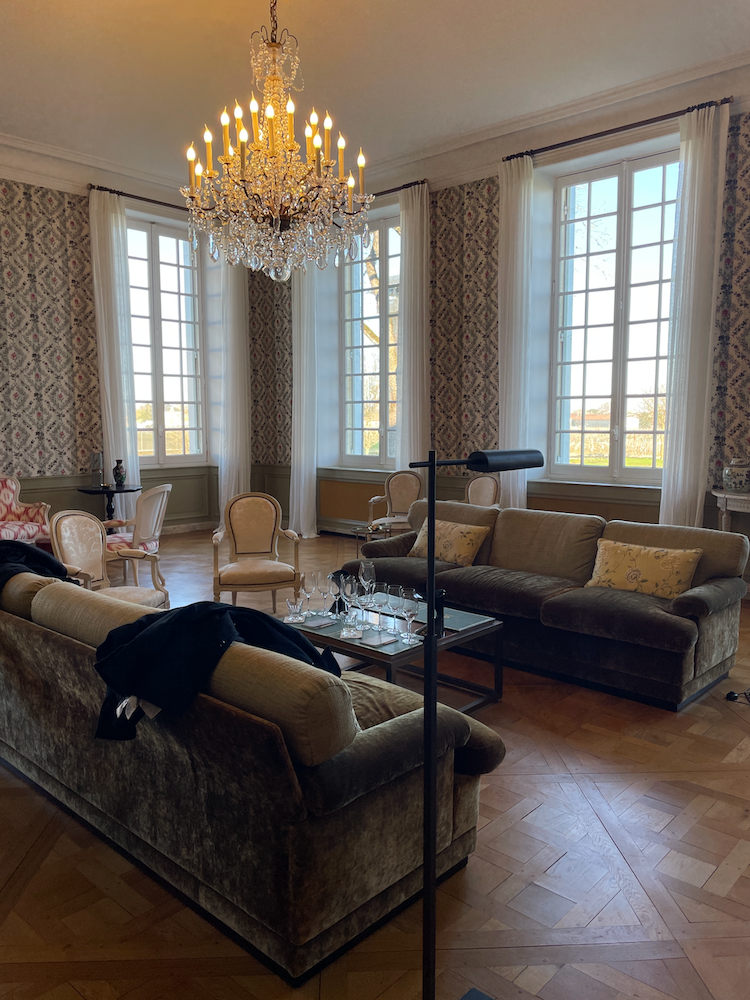
No one lives in the Chateau anymore. It is now used just for special functions and tastings. As a part of our tasting we were supposed to have: one of their “second” wines (the Sarget 2015) and then the 2015, 2009, 1996 and 1989. It was determined that the 2015 was not ready for tasting yet, so instead, they replaced the 2015 with a 2014 and a 2005.
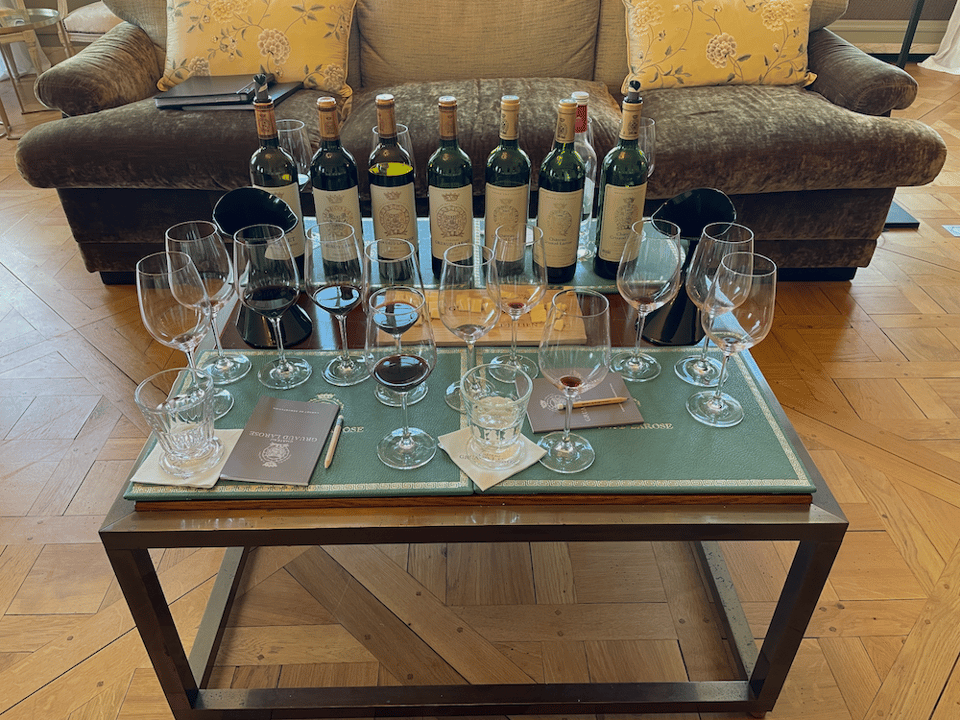
To map what we tasted to the above photo, from left to right: Sarget 2015, 2015 (unopened but shown to us so we could see how the label has changed) then the 2014, 2009, 2005, 1996 and 1989.
Before each tasting they talked about the composition of the wine for that year (ie: how much of each type of grape was in it) and some of its tasting notes. They had a very fancy device for pouring the wine without removing the cork. It had a needle that punctures the cork and extracts the wine, then the cork heals itself when the needle is removed. We thoroughly enjoyed everything, from the tour to the tasting (the Friday rush-hour traffic was not so enjoyable on our way back into Bordeaux), it was a lovely day. In case you were wondering, the favourites for both of us were the 1989 and 2009.
We also went to the Bordeaux Wine and Trade Museum. Situated in the Chartons District of Bordeaux. The museum is housed in the building of Louis the XV’s royal broker, and contains an interesting collection of documents, rare bottles and wine-making equipment. We were both quite taken with the old ledgers tracking the wine trade in and out of Port de la Lune (the name given to Bordeaux in the middle ages because of its striking crescent shape harbour due to a curve in the Garonne River).
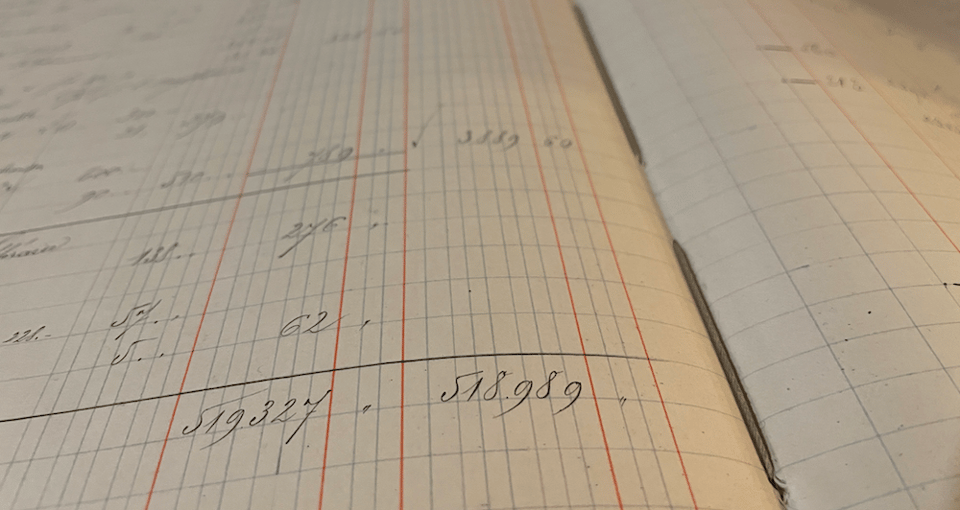

I also need to tell you about a Bordeaux wine store, L’Intendant Grand Vins de Bordeaux. From the outside, it looks like just another beautiful corner building in Bordeaux.

But when you step inside, you realize that they have removed the floors inside the building and inserted a 5-storey spiral staircase around which the wine is displayed.
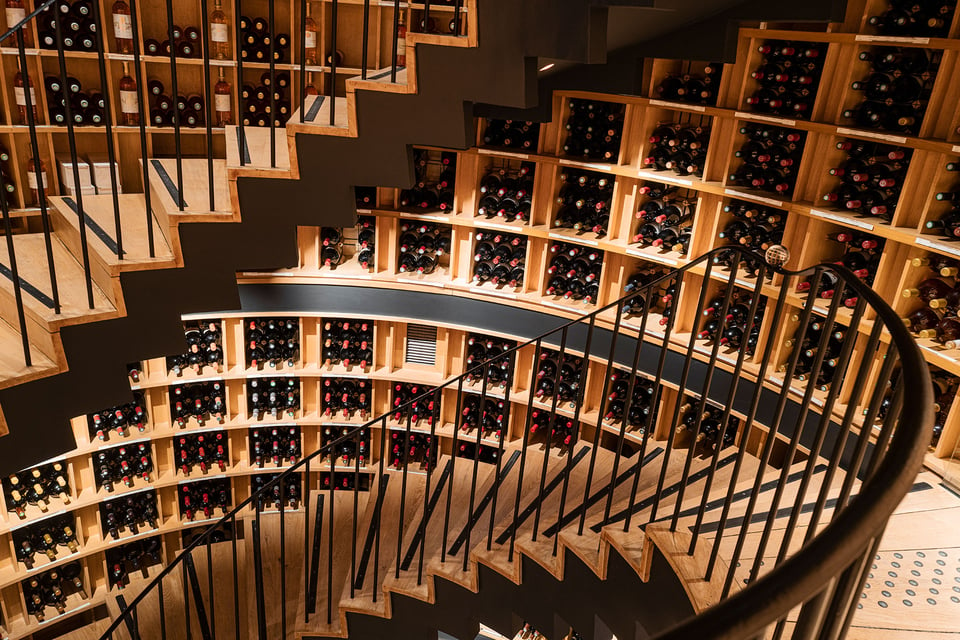

It’s quite an amazing experience to walk up and look at all the various wines as you are ascending.
In the last post about Bordeaux, I wrote that I had more to say about Susan Treister’s UFO Sculpture.
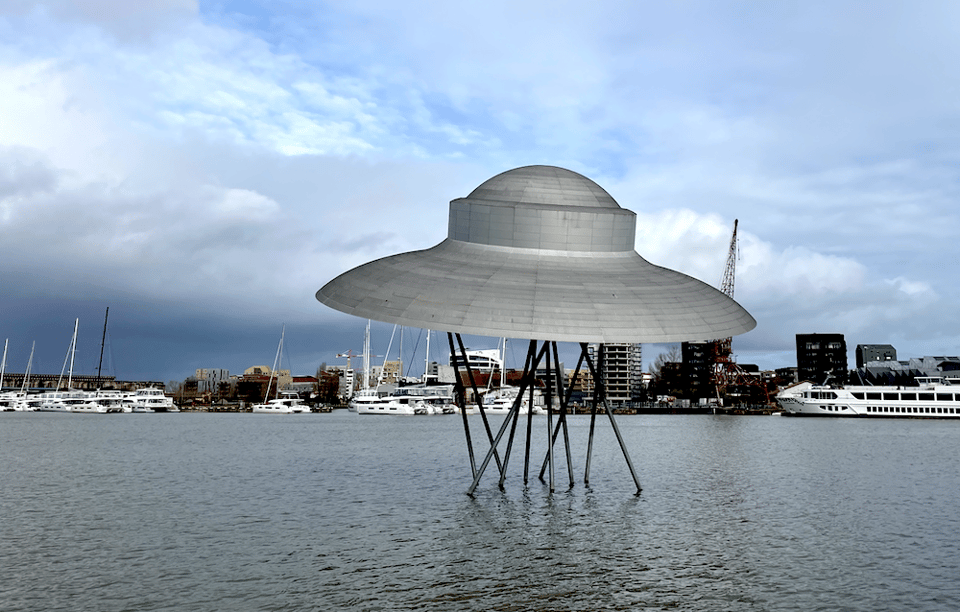
In doing research on that sculpture, I learned that it was made from metal that had been salvaged from WWII shipwrecks in the Garonne. You can see more photos on her website of the salvaged metal.
This was particularly interesting to me because we went a few times to the Bassins des Lumières. It is an immersive cultural space that has been built in four bays of what was an eleven bay submarine base (seven of which were dry docks) built by the Germans during WWII.
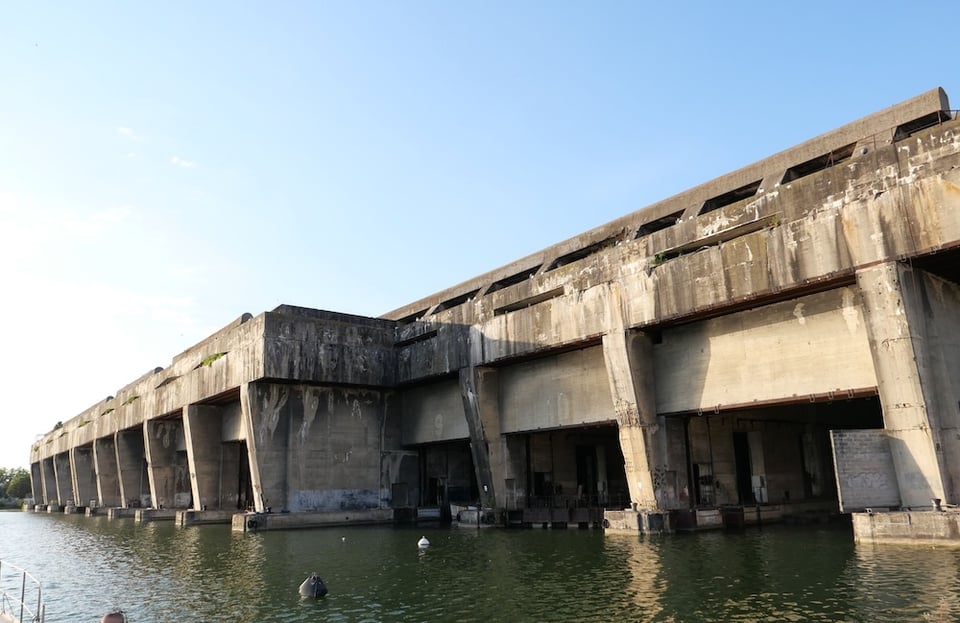
While we were in Bordeaux they had two different “immersive exhibits" showing: “De Vermeer à Van Gogh” and “Le Petit Prince” and we saw both. There was something about the volume of the space, the way you could see through, and across the bays, the reflection of the water, and the history of the place, that made for a compelling experience.



The “shows” would loop with a gap in between them, during which they would show images from upcoming exhibits, as well as a short piece projection which made it look like the doors at the end of the bay was opening and a submarine was floating into the bay towards you. It was shockingly realistic and unsettling.
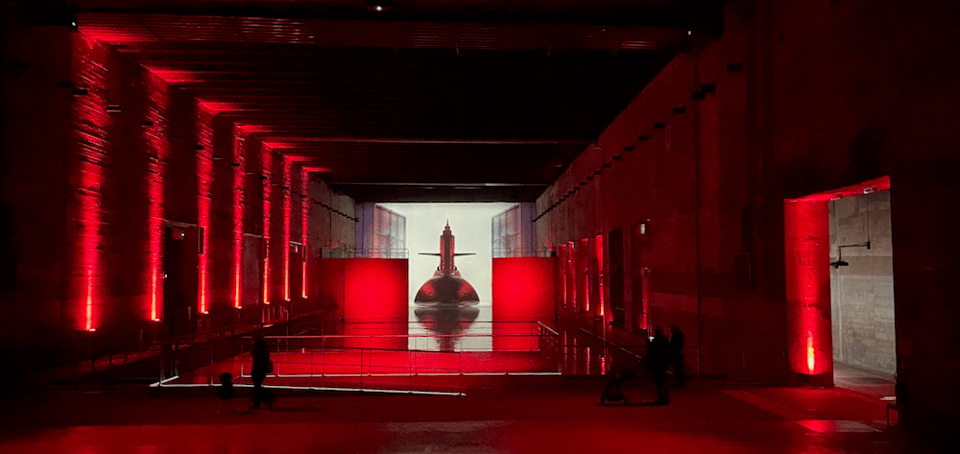
I could write an entire post just on the history of this submarine base, its construction, and its transformation into the cultural space that it partially is today because its so interesting to me. But, back to the UFO, in 1944 when the Germans were retreating, they scuttled many of their ships, including ones around this submarine base, in addition to many others ships along the Garonne.

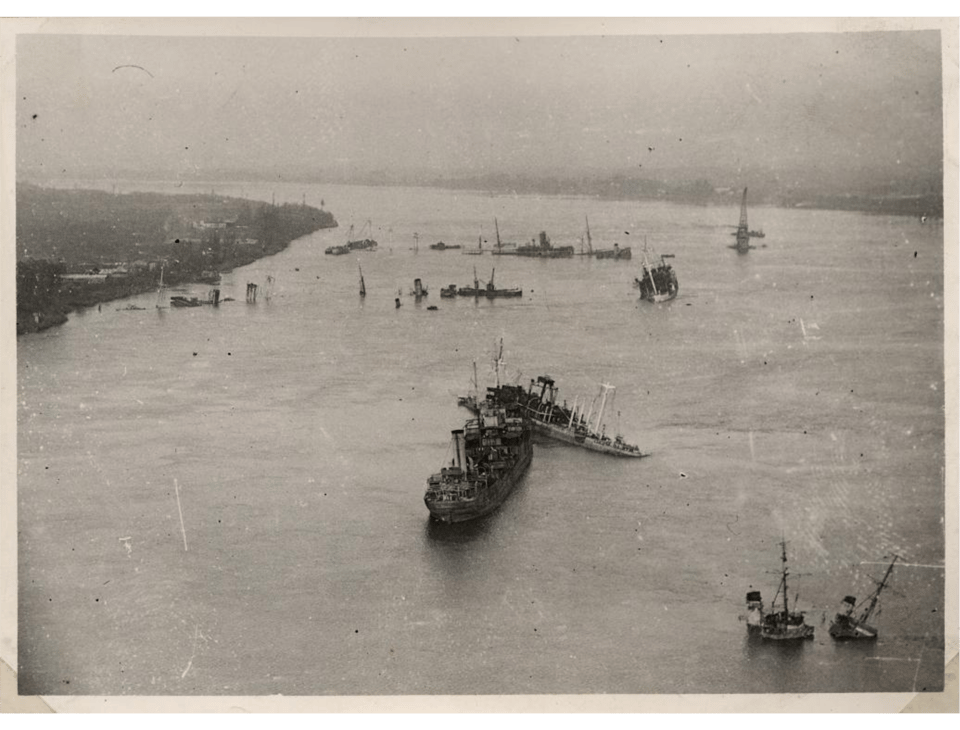
To close off, one of the things that is synonymous with Bordeaux (aside from wine) are cannelé (not to be confused with the Italian cannoli).

It is a pastry with a thick caramelized outside and a soft custard inside. There are cannalé stores everywhere in downtown Bordeaux, the main purveyors being Baillardran and La Touque Cuivrée(which translates to the copper hat). I tried one, but didn’t love it. But, what I did love, was something I discovered across the street from one of our favourite coffee places (L’Alchimiste) at Les Dunes Blanches. According to the story on their website, Brice, the son of a baker in Cap-Ferret, was “coming home” at 5am after a night out and knowing his father would already be at the bakery, he stopped by, grabbed some left-over choux pastry, and filled it with lightly whipped cream, and La Dune Blanche was born.

There are not enough words to describe how delicious these little puff pastries were. Speaking of deliciousness, in addition to wine, Bordeaux also has quite a history of chocolate making, with the first chocolate factory being founded in 1825 (Louit Frères et Compagnie). So, in addition to all the cannelé stores, there are many chocolatiers, including one around the corner from our Airbnb, Chocolaterie Lalère. I stopped in one grey, drizzly afternoon for a Chocolat Chaud Classique, and this beautiful tray arrived (you are given the choice of which chocolate you want to accompany it [dark or milk chocolate]).

Earlier in our stay, when Adam’s mother was visiting us, we had stopped in and she and I tried their Chocolat Chaud Trio, which comes with three smaller cups of these flavours: Classique, Gourmand (Hazelnut Praline) and Vegetal (Almond Milk). The Classique was the winner for me, so that’s what I had on my return stop.
A few places from the remainder of our stay in Bordeaux: Le Sobre Chartons (a wine bar that has ~24 wines open in three lovely enomatic dispensers [see photo here], you insert your card [loaded with money] into the machine choose the type and amount of wine you would like to dispense into your glass: 2, 5 or 12cl so you can taste a variety of wines); Les Drôles (a lovely little restaurant in the old town with a cozy vaulted dining area in the basement); Bon Endroit (a cute gift shop in Old Town that carries a lot of French made items); Pharmacie Gambetta (if you find yourself needing a knowledgeable and friendly pharmacist [who enjoys playing in an ACDC cover band on the side]); SOS Médecins Bordeaux (if you find yourself needing to call and make yourself an appointment at a medical clinic [they have locations all across France]); and SYNLAB (if you find yourself needing to go for labwork they have locations all across France).